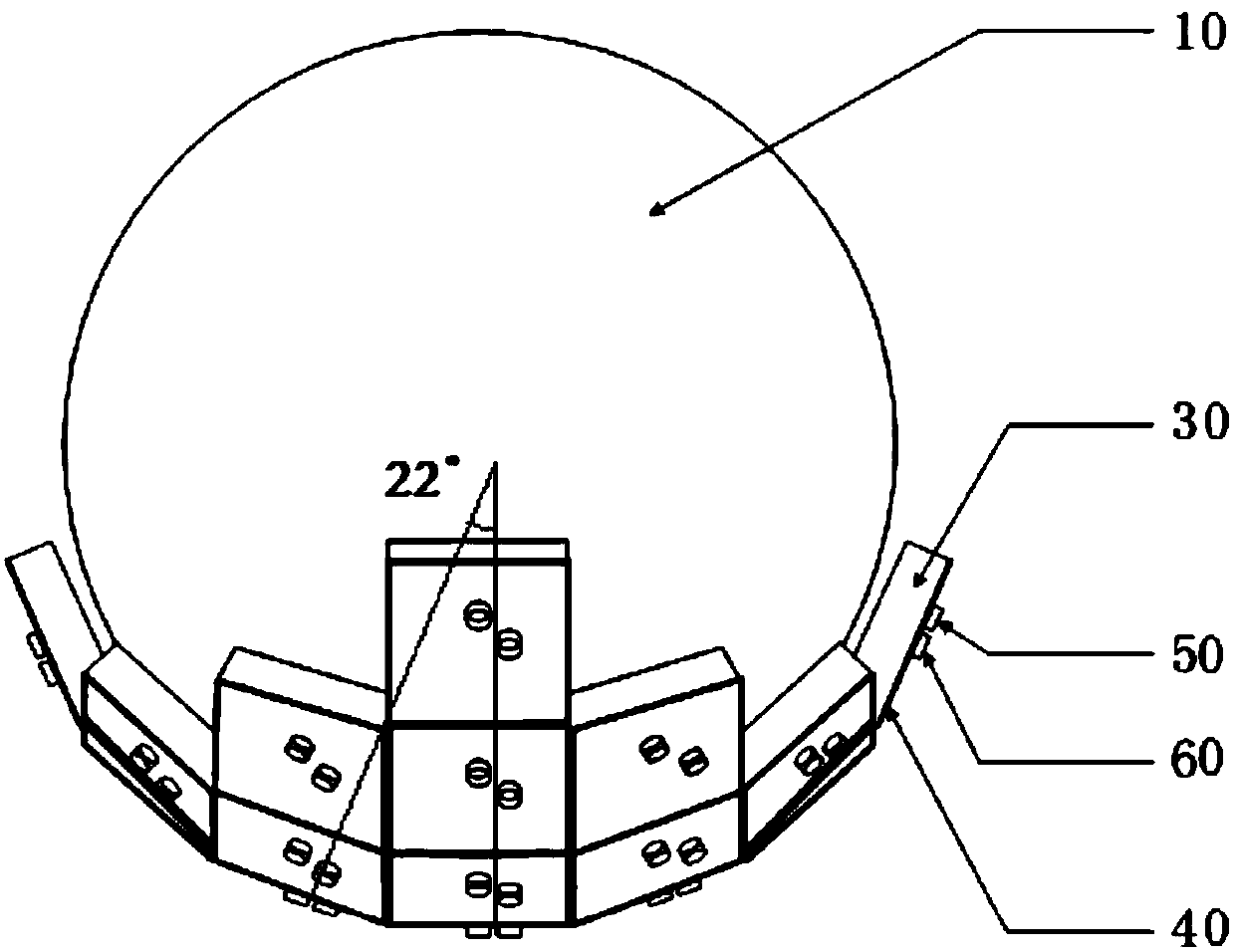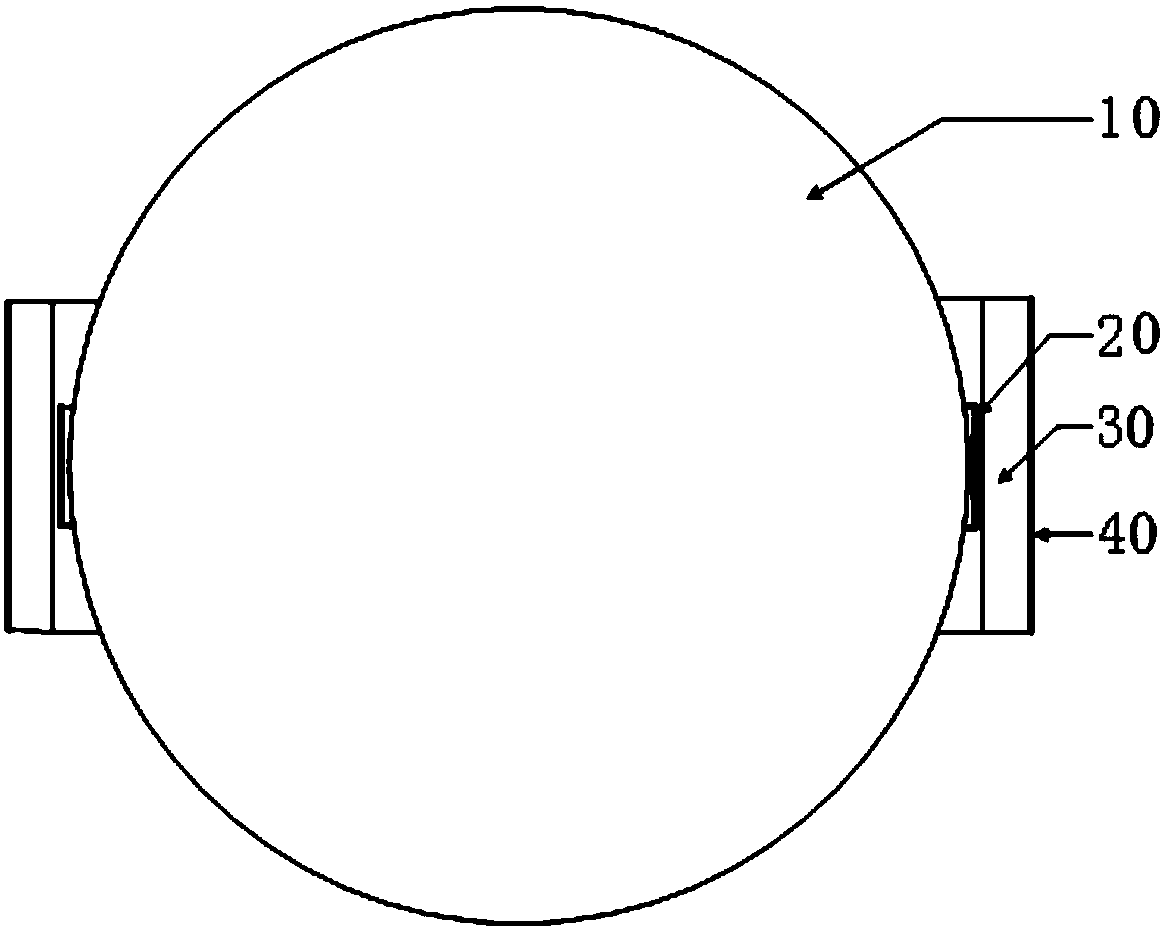Low profile array antenna based on Luneburg lens array
A Lumberg lens and array antenna technology, which is applied to antenna combinations, antennas, antenna arrays and other directions with different interactions, can solve the problems of large volume and power consumption, high cost, limited trial scenarios, etc., and achieve market adaptability Strong, easy to control cost, reduce complexity and design difficulty
- Summary
- Abstract
- Description
- Claims
- Application Information
AI Technical Summary
Problems solved by technology
Method used
Image
Examples
Embodiment 1
[0058] Lunberg lens unit 10, such as figure 1 , figure 2 , image 3 As shown, it is a sphere with a diameter of 140 mm, which is composed of upper and lower symmetrical upper and lower hemispheres. Each hemisphere is divided into multiple layers. The more layers, the better the performance. However, considering the difficulty of processing, this example gives 12 layers. Each layer is composed of three-dimensional cross unit structure. The center of each cross unit is a cube, and from the outer edge of the sphere to the center, the volume of the cube becomes larger and larger, so that the Lunberg lens unit 10 is a dielectric sphere antenna with a gradient permittivity structure, which can transmit light from all directions. The microwave signal converges to a point on the surface of the lens, which can realize the convergence and directional emission of electromagnetic waves. Its dielectric constant distribution satisfies the dielectric constant distribution of a spherical ...
Embodiment 2
[0083] Compared with Embodiment 1, this embodiment has the following differences:
[0084] For the antenna unit, the upper surface metal layer 20 and the lower surface metal layer 40 are metal conductor copper with a thickness of 0.018 mm. The metal layer on the lower surface constitutes the ground of the antenna, and the size is 28mm×28mm. The dielectric substrate 30 is a rectangular RogersRT / duroid6010 dielectric board with a dielectric constant of 10.2, a thickness of 8 mm, and a size of 28 mm×28 mm.
[0085] Curved antenna arrays, such as Figure 11 As shown, the microstrip antenna array placed on the surface of each Lunberg lens unit 10 is formed by 25 microstrip antenna units arranged along the arc surface, specifically: 7 of the 25 antenna units are arranged side by side in an arc , 5 antenna units, 3 antenna units, and 1 antenna unit are sequentially arranged outward on both sides thereof, finally forming an arc-shaped (bowl-shaped) structure.
[0086] Lumberg lense...
Embodiment 3
[0095] Such as Figure 18 As shown, a low-profile array antenna based on a Luneburg lens array includes 16 Luneburg lenses and transceiver components; the 16 Luneburg lenses are arranged on the same horizontal plane; the Luneburg lens includes a Luneburg lens unit and is fixed on a Luneberg Antenna array on the surface of the lens element; the antenna array consists of 16 antenna elements.
[0096] The transceiver component includes a receiving module and a transmitting module:
[0097] The receiving module includes 16 first signal processing units, a synthesizer, a first attenuation controller, and a first phase shift controller; each first signal processing unit includes 16 first filters, 16 first low-noise amplifiers, 1 first multiplexer, several first adjustable attenuators, and several first phase shifters; the number of the first adjustable attenuators is the same as that of the first phase shifters, and the first multiplexer One or more signals that meet the requireme...
PUM
 Login to View More
Login to View More Abstract
Description
Claims
Application Information
 Login to View More
Login to View More - R&D
- Intellectual Property
- Life Sciences
- Materials
- Tech Scout
- Unparalleled Data Quality
- Higher Quality Content
- 60% Fewer Hallucinations
Browse by: Latest US Patents, China's latest patents, Technical Efficacy Thesaurus, Application Domain, Technology Topic, Popular Technical Reports.
© 2025 PatSnap. All rights reserved.Legal|Privacy policy|Modern Slavery Act Transparency Statement|Sitemap|About US| Contact US: help@patsnap.com



